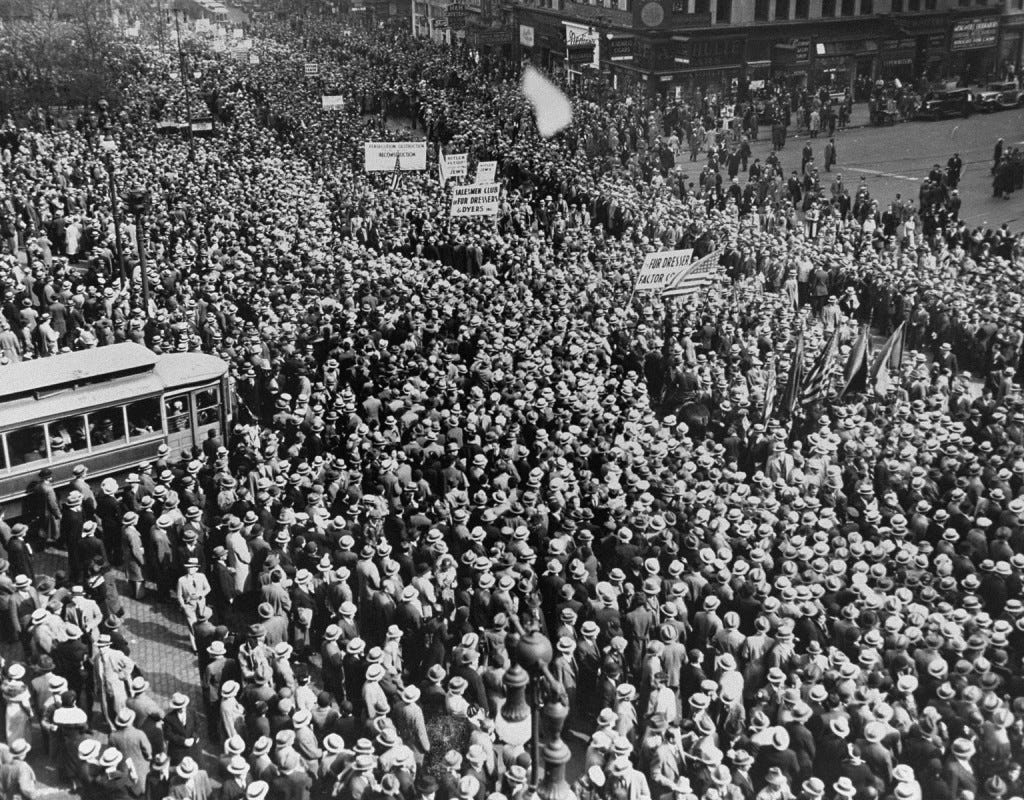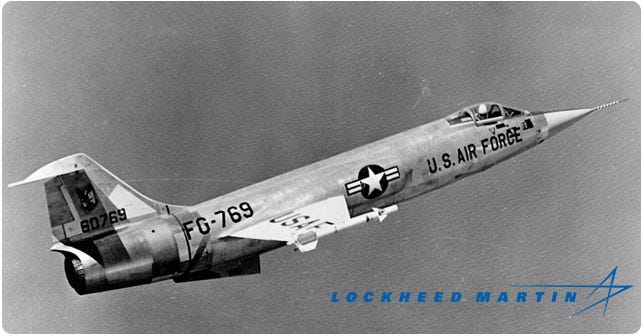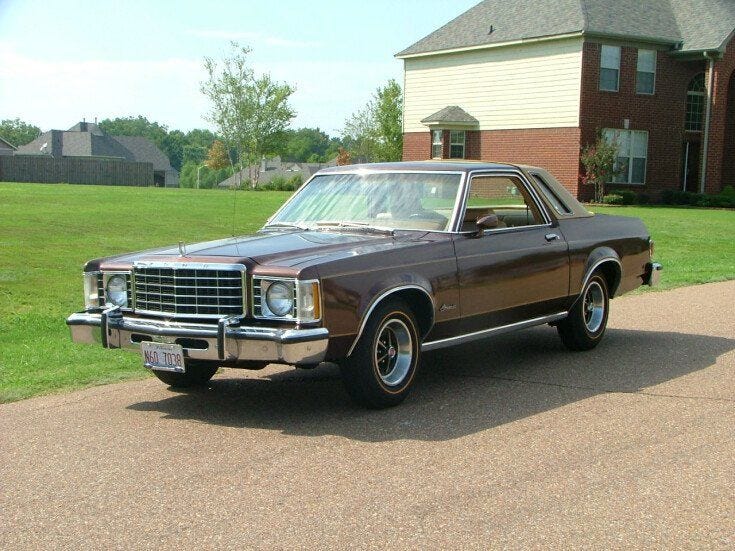The corporation is a private tyranny legally obligated to prioritize profits for its shareholders over everything and everyone else. In this role, it regularly acts against the public good.
Corporations are greedy, amoral agents employed by the Powers That Be in their plans for a New World Order. They blatantly disregard public health, safety, the environment, and even human life in their endless quest for the highest possible financial gain in as little time as possible.
With literally 1000s of corporate conspiracies and scandals to choose from in the past century alone, I have focused on ten of the most interesting nefarious corporate conspiracies from the last decades that best represent the corporate modus operandi.
Starting with…
No. 10: The Phoebus Cartel Engineered Light Bulbs With Shorter Lifespans (Planned Obsolescence)
Top light bulb manufacturers collude to limit the lifetime of incandescent light bulbs necessitating more frequent replacement thus increasing profits.
On Christmas Day, 1924, representatives of major light bulb manufacturers from all over the world, including Philips, General Electric (GE), and Osram, met in a Geneva backroom to form a cartel controlling the manufacture and sale of light bulbs.
The cartel’s first order of business was to decrease the life expectancy of light bulbs on the market to 1000 hours, instead of the then common 2500 hours. Members were fined for not adhering to the guidelines until they developed a filament thin enough to achieve the cartel’s desired goal. This feat makes the light bulb one of the first victims of planned obsolescence, an industry practice were otherwise durable products are designed to fail after a predetermined amount of time or use. Desktop printers, nylons, and iPods are other examples of planned obsolescence. The practice leads to massive piles of waste and landfills.
No. 9: The Seven Sisters Oil Cartel Fixed the Worldwide Price of Oil
The world’s 7 largest producers of oil meet to limit production and control the price of oil to increase profitability and limit competition to the group.
In 1928, Sir Henri Deterding of Royal Dutch Shell host fellow oilmen from the Anglo-Persian Oil Company (BP), Gulf Oil, Standard Oil of California (now Chevron), Texaco (later merged with Chevron), Standard Oil of New Jersey (Esso/Exxon) and Standard Oil Company of New York (now part of ExxonMobil) at Achnacarry Castle in Scotland.
There, the group known as the Seven Sisters hash out the Achnacarry Agreement forming an oil cartel with the intention of controlling world oil production and fixing present and future prices.
No. 8: General Motors Destroyed Alternatives to Gas-Powered Transportation
Automotive giant General Motors secretly buys and scraps streetcars in cities throughout the United States in order to make the public dependent on gas-powered vehicles.
General Motors, Firestone, Standard Oil of California and other companies form National Security Lines, a front company with the express purpose of buying up electric streetcars (trams, trolleys) companies throughout the United States in order to disassemble electric-powered cars and replace them with GM buses, equipped with Firestone tires, and fueled by Standard Oil’s petroleum.
From 1936 to 1949, the group bought and destroyed more than 100 electric streetcar systems in 45 cities including New York, Los Angeles, and Philadelphia. In 1949, Firestone, Standard Oil, GM and Mack Trucks were convicted of conspiring to monopolize bus sales. General Motors was fined a paltry $5000 for its role in the conspiracy.
Mission Accomplished: the electric streetcar never recovered from the blow.
At the same time, General Motors chairman Alfred P. Sloan comes up with a plan to build a highways system crisscrossing the entire United States further assuring that the public remain dependent on oil-burning automobiles. The Federal Highway Acts were passed in 1944, 1956, and 1968, fulfilling Sloan’s dream and sealing the faith on alternative fuel-burning transportation.
No. 7: The De Beers Cartel is Fooling Us Into Thinking Diamonds are Rare And Valuable
De Beers forms a syndicate to monopolizes worldwide diamond distribution and limit the amount of diamonds on the market to create an artificial scarcity.
With financial support from NM Rothschild in London (His descendant David de Rothschild still sits on DeBeers’ board), Cecil Rhodes consolidates smaller mines and launches the De Beers Mining Company. De Beers quickly realizes that diamonds are not rare and begins stockpiling them only releasing a limited quantity and maintaining an artificially high price for diamonds and creating clever marketing campaigns to make them appear valuable.
De Beers forms the Diamond Syndicate establishing a worldwide monopoly on the distribution of diamonds and begin aggressively marketing diamonds. Any diamond mined and cut outside the De Beers is deemed an illegal traffic diamond and ineligible for sale in the United States. De Beers went so far as to create a deceptive blood diamond campaign in order to keep all of Angola’s diamond, 70% of which are “gem” quality, off the international market.
The strength and influence of the De Beers cartel has decreased a great deal in the past decade as the company was forced to make arrangements with Russian, Canadian and Australian diamond producers.
No. 6: IBM Helped the Nazis with the Logistics of the Holocaust
Computer giant IBM works with the Nazis through its German and Polish subsidiaries to identify, relocate, imprison, and execute victims of the Holocaust.
Despite worldwide condemnation of Nazi atrocities, IBM, bastion of US corporate establishment known for its enforced dress code circumvented the Trading with the Enemy Act to facilitate Hitler’s Final Solution and profit from the Nazi war machine.
IBM owned the punch card technology necessary to tabulate large amounts of data. The German licensee for IBM’s punch card technology was Dehomag, a 90% IBM-owned subsidiary. By 1933, the Nazis had rounded up some 60,000 political prisoners in Dachau, Bavaria.
However, the task of separating Jews from the Aryan population proved difficult. The regime soon called for a national census so that it could more easily identify Jews and other undesirables within the Prussian population. Dehomag eagerly offered its services for the task and were able to identify 2 million Jews out of a population of 65 million, a much higher figure than previous assessment of around half a million. IBM used the proceeds to built its first factory in Berlin, anticipating further business with the Nazis.
Amongst other forms of identification, the punch card system proved immensely useful in identifying and displacing large segments of Europe’s population and placing them to work in forced-labor camps or sending them to their deaths. Each concentration camp was assigned a number (Dachau 003, Auschwitz 001) by IBM engineers who were tasked with programming individual punch cards. IBM designated Jews a 8, Gypsies a 12, and homosexual were given a 3.
Even individual causes of death were carefully documented; The number 4 meant the inmate had died by execution, 5 by suicide, while those who met death in the gas chambers were assigned a 6.
After the Nazi invasion of Poland, IBM created a new subsidiary called “Watson Business Machines” to help organize the mass deportation of polish Jews. It was named after Thomas Watson, the company’s chairman and CEO. Watson himself received the Order of the German Eagle from Hitler himself for his personal contributions to the Nazi regime.
IBM had a vital role to play in all 6 phases, or steps, necessary to carry on the Holocaust: “identification, expulsion from society, confiscation, ghettoization, deportation, and even extermination”.
IBM wasn’t the only American corporation co-operating with the Nazis. Ford and General Motors continued building in Germany and selling cars to Nazis. Coca Cola founded Fanta to get around sugar embargoes against Germany. and quench Nazi thirsts.
No. 5: Lockheed Martin Used Bribery to Sell Crappy planes
Senate investigation into arm manufacturer Lockheed Martin reveal that bribes are commonly practiced within the arms industry.
In the mid-70s, the Church Committee discovered evidence that the recently bailed-out arms manufacturer, Lockheed Martin routinely and systematically participated in mass-scaled bribery in order to unload its unpopular F-104 Starfighters to US-friendly governments.
There were good reasons for the F-104 low sales record. Essentially a rocket with ridiculously small wings, the plane was prone to crashing or exploding. In Germany, the planes were known as “widow makers” (Witwenmacher) with 30% of planes lost. Canadians pilots lost nearly half their Starfighters. Pilot legend Chuck Yeager also nearly lost his life in a record breaking attempt. Not exactly quotable statistics for Lockheed’s sales brochures.
In Japan, top level members of business, government, and organized crime were involved in bribery. Takers included Japan’s head of government, Prime Minister Kakuei Tanaka. In Germany, Minister of Defense Franz Josef Strauss and his party also took a healthy commission on the sale of 900 Starfighters. Strauss was later a central character in Canada’s all-too-similar Airbus Scandal.
In the Netherlands, the scandal embroiled the Dutch Royal Family when Prince Bernhard was exposed for taking in a flat $1 million dollar fee for his role in selling F-104s. His dealings with Lockheed reveal that the prince was quite familiar with these types of arrangements.
However the Prince was not prosecuted for his crimes after Queen Juliana, his wife, threatened to abdicate. The Netherlands is the sort of place where this sort of crap defense actually works. The Royals were never prosecuted, but their reputation was forever tainted. Even the prince’s oil-soaked warmongering buddies at the Bilderberg Group abandoned him publicly and he was forced to step down from the group he had cofounded.
The Lockheed Business Model was hardly unique to Lockheed, as Northman CEO Tom Jones testified in a 1975 Senate Sub-committee, bribery was commonplace in the industry. Northrop would host high-ranking Pentagon officials in topless bars, fancy restaurants, and take them on luxurious goose huntring trips.
In 1979, Lockheed admitted to paying out at least $202 million in bribes. The company also plead guilty to 4 counts of frauds and 4 counts of of making false statements to government officials.On the books, these “commission” were written off as “marketing costs”.
Bribery is rampant in other industries as well with Big Pharma and Big Tobacco also notable practitioners.
Lockheed itself made a perfect recovery. Despite its criticisms, the F-104 is today lauded as one of the first supersonic planes that helped the US achieve air superiority. The plane was finally retired in 2004, one of the longest operational run for any military plane. Lockheed also achieved success with its parallel top secret development of the U2 spy plane at Area 51.
No. 4: Bayer Knowingly Sold HIV-Infected Products
Pharmaceutical giant Bayer knowingly sells blood HIV-tainted blood to foreign markets after being barred from selling it in the US.
From the 1970s to mid-1980s, pharmaceutical giant Bayer, best-known for its flag product Tylenol, and its subsidiary Cutter Biological, sold HIV-infected blood to hemophiliacs throughout the United States. Hemophiliacs are at risk of bleeding out to death if not regularly treated with clogging agents provided by Bayer and other manufacturers. Over half of the 16000 American hemophiliacs contracted HIV through contaminated blood products. The company routinely filled its supply with blood from high-risk groups such as prisoners and intravenous drug users.
Aside from obtaining its blood from dubious sources, the company could hardly be accused of knowingly selling contaminated blood. After all, effective tests for detecting HIV positive blood had yet to be developed. Except that, in early 1983 the company was fully aware that people were contracting HIV and Hepatitis C through its plasma products. In response, Bayer developed a new safer heat-treated process.
What comes next is what makes Bayer’s actions especially deplorable….
The company didn’t just go ahead and destroy its contaminated inventory. Claiming contractual obligations, the company decided to carry on manufacturing and selling its old product because it was cheaper to produce than its new safer blood.
As the tainted product became increasingly unmarketable in the United States and Europe, the company began unloading its tainted stocks on other international markets such as Asia and South America. When Hong Kong distributors warned of a medical emergency, the company told them that old stocks had to be used up before they could receive the new non-infected blood.
Bayer and three other manufacturers eventually settled claims in the United States for $620 million. The companies admitted no guilt and warned that each infected hemophiliacs accepting the one-time $100,000 settlement would be barred from filing any future lawsuits against the companies.
Meanwhile In France, criminal charges were filed against high-level government officials including former Health Minister Edmond Herve, who was eventually convicted of manslaughter.
Other pharmaceutical companies involved in the Infected blood scandal beside Bayer and Cutter Biological include, Alpha Therapeutic Corporation, Institut Mérieux (now part of Sanofi), and Baxter.
No. 3: Ford Opted Not To Recall Exploding Pintos
Ford Motors put profits over people when it decided that settling legal damages from people burning to death in car explosions following rear end collisions would be cheaper than mass recalling its bestselling Pinto automobiles.
With the Ford Motor Company feeling the impact of the Volkswagen Beetle in the small-car market, the race was on within the company to come up with an in into this lucrative market. Enter Lee Iaccoca who had risen to the rank of Vice-President thanks to his previous success with Mustang.
With the goal of creating a car weighing no more than 2000 pounds at a cost of no more than $2000, Iaccoca began rushing the Pinto into production. Ford engineers soon discovered that there was a problem with the rear gas tank. Protruding bolts on the differential housing caused the gas tank to rupture and leak during rear collisions in every single internal test conducted by Ford.
However, expensive tooling for the production of Pintos were already well on their way, so accountants for the company ran a cost-benefit analysis and concluded that it would be cheaper for the company to settle any upcoming lawsuits out of court rather than begin the expensive retooling process. Ford was not ran by engineering decisions, but by sales decision. At the same time, the company lobbied Washington extensively to relax auto safety regulations.
The Pintos proved to be immensely popular once again making Iaccoca a hero of the automotive industry. However, the Pintos dirty secret could not be held indefinitely after Pintos started going boom all over the United States. In the end between 500 to 900 people died in Pinto-related accidents. The accidents were especially atrocious as they usually involved the car’s occupants being trapped inside and slowly burning to death. The problem could be remedied for as little as $1.80 per car.
In 1977, Mother Jones published Pinto Madness after getting its hands on a Ford internal memo in which the company coldly laid out the numbers, allocating each human life lost $200,000 and $67,000 per injured victims. The memo concluded that the cost of settling legal cases would be around $49.5 million and estimated the cost of fixing the problem permanently at $137 million.
Profits Over People.
No. 2: Goldman Sachs Precipitated The Housing Bubble
Goldman Sachs grouped high-risk mortgage loans into packages which it then sold to the public as premium investment grade while simultaneously betting against its own products.
Founded in 1869, Goldman Sachs is presently the fifth largest bank in the United States. Goldman Sachs was at the very center of the 2008 Financial Crisis and one of the largest promoter of bad mortgages and related financial instruments that led to the crisis.
As Rolling Stone’s Matt Taibbi explains, Goldman, the “great vampire squid” has been using the same playbook since its inception. It promotes and pours huge amounts of money into crap investments (“creating a market” in GoldSpeak) until a bubble forms effectively draining the savings of unsavvy investors, mostly from middle class. When the bubble unavoidably burst, Goldman’s political connections insures that it’s bailed out, once again fleeing middle class taxpayers. Lather. Rince. Repeat.
In the early 1900s, Goldman would peddled financial instruments known as Investment Trusts. Essentially, Goldman would form a trust and use its capital to buy Goldman stocks, sending its price soaring. It would then form an additional trust and use its capital to buy shares in the first trust, sending its share price soaring as well as Goldman’s. They repeated this process over and over. The widespread practice eventually caused the 1929 market crash and the resulting in the Great Depression.
No. 1: Exxon Has Known About Global Warming For Over 30 Years
After its own scientists confirm the reality of global warming in the late 70s, oil giant Exxon begins funding climate change denial while simultaneously positioning itself for future Arctic drilling.
Oil giant Exxon Mobil is the second most profitable public corporation in the world and the largest of the Seven Supermajors (ExxonMobil, Shell, BP, Chevron, Total, ConocoPhillips, Eni), aka Big Oil. In 1998, Exxon (Standard Oil of New Jersey) and Mobil/Esso (Standard Oil of New York) merged to form ExxonMobil, reuniting fragments of John D. Rockefeller’s Standard Oil and forming the world’s largest corporation.
In the summer of 1977, Exxon’s own senior scientists informed top leaders that the burning of fossil fuels, the company’s stock-in-trade, would eventually cause the planet to warm up causing mass worldwide catastrophes. The company spent the next few years confirming the information, and arrived at the same conclusion.
What did Exxon choose to do with this information?
The same thing any amoral multinational corporation does when it finds out that its flag product will eventually destroy the planet… it lied.
Exxon chose to deny climate change publicly, keeping the public in the dark and hooked on oil, while simultaneously preparing and positioning themselves for an anticipated rise in global temperatures.
Of course, the company knew that no one would believe the world’s largest oil company when it claimed that its products did not contribute to global warming, so it took a page from Big Tobacco’s playbook and had someone else say it.
Exxon began pouring millions of dollars into think tanks and experts for hire. In turn, these oil-soaked “experts” wrote papers and appeared on television denying the reality of global warming and sowing the seeds of doubt. At least 39 Exxon-funded organisations publicly misrepresented climate change science in its publications. Big Oil pundits brought us the Oregon Petition urging the rejection of the Kyoto Protocol. The petition received signatures from over 31,000 “scientists”, including “Doctor” Geraldine Halliwell of the British pop group Spice Girls, as well as characters from M*A*S*H and Star Wars. Charles Darwin himself rose from the dead to express his distaste for clean air.

















Rothschilds hoarding diamonds to make them valuable makes me think they’re doing the same thing with gold.
Corporations ALL the way down. Including governmental entities.